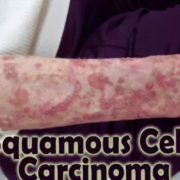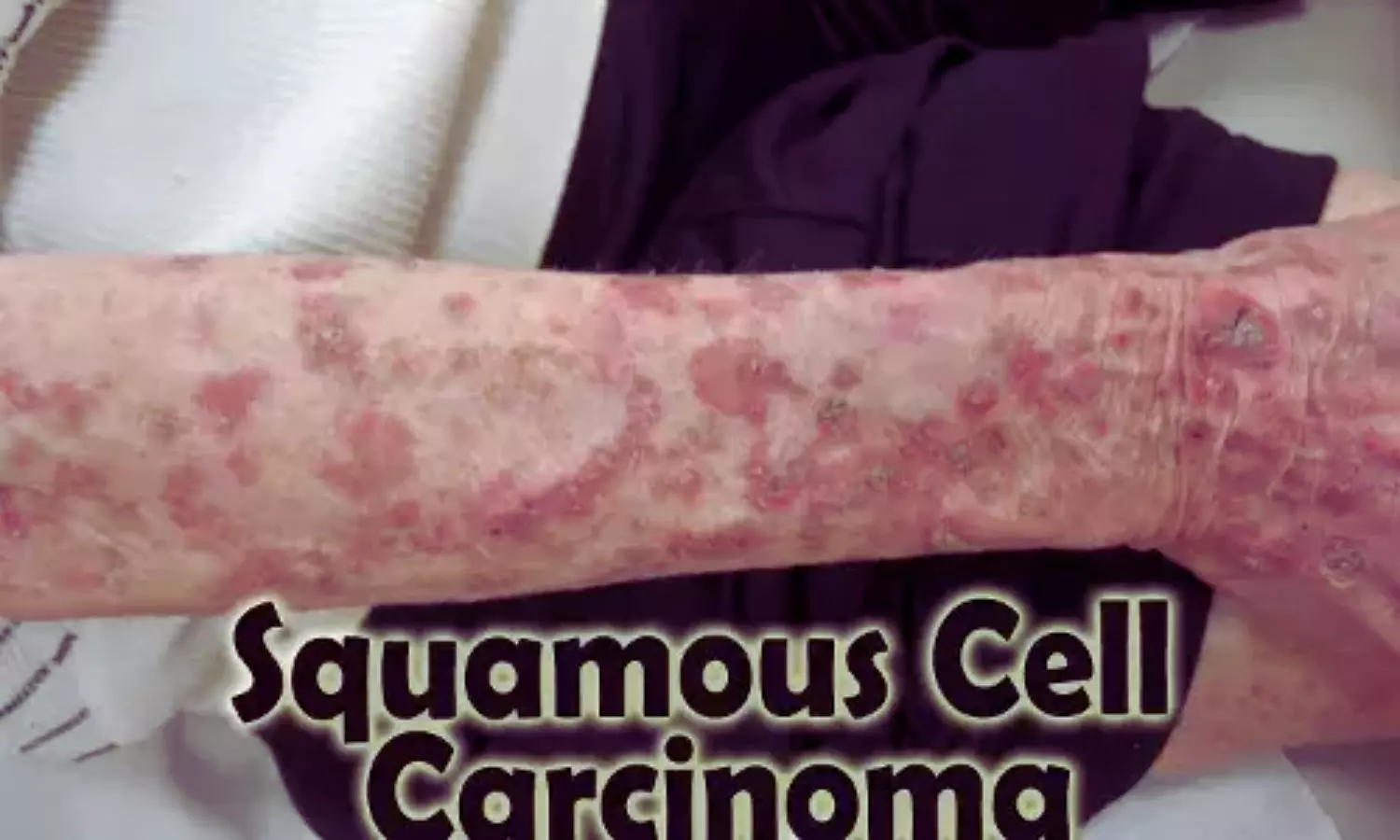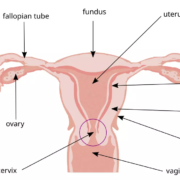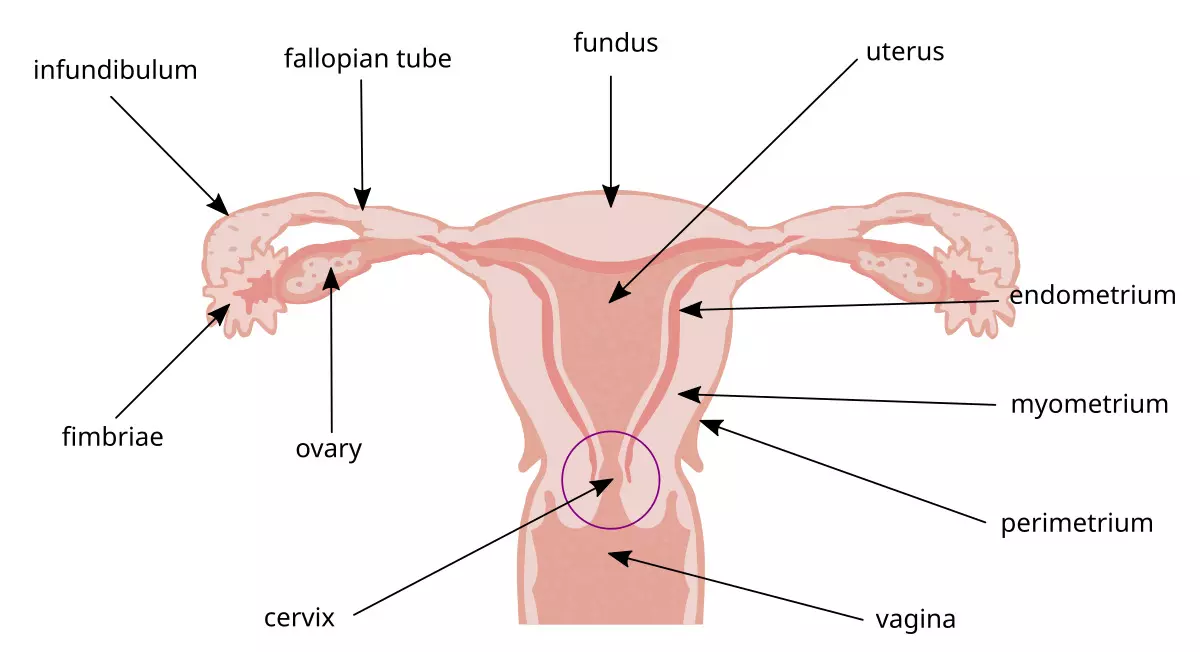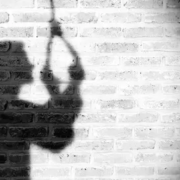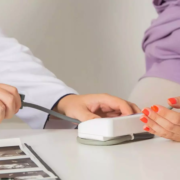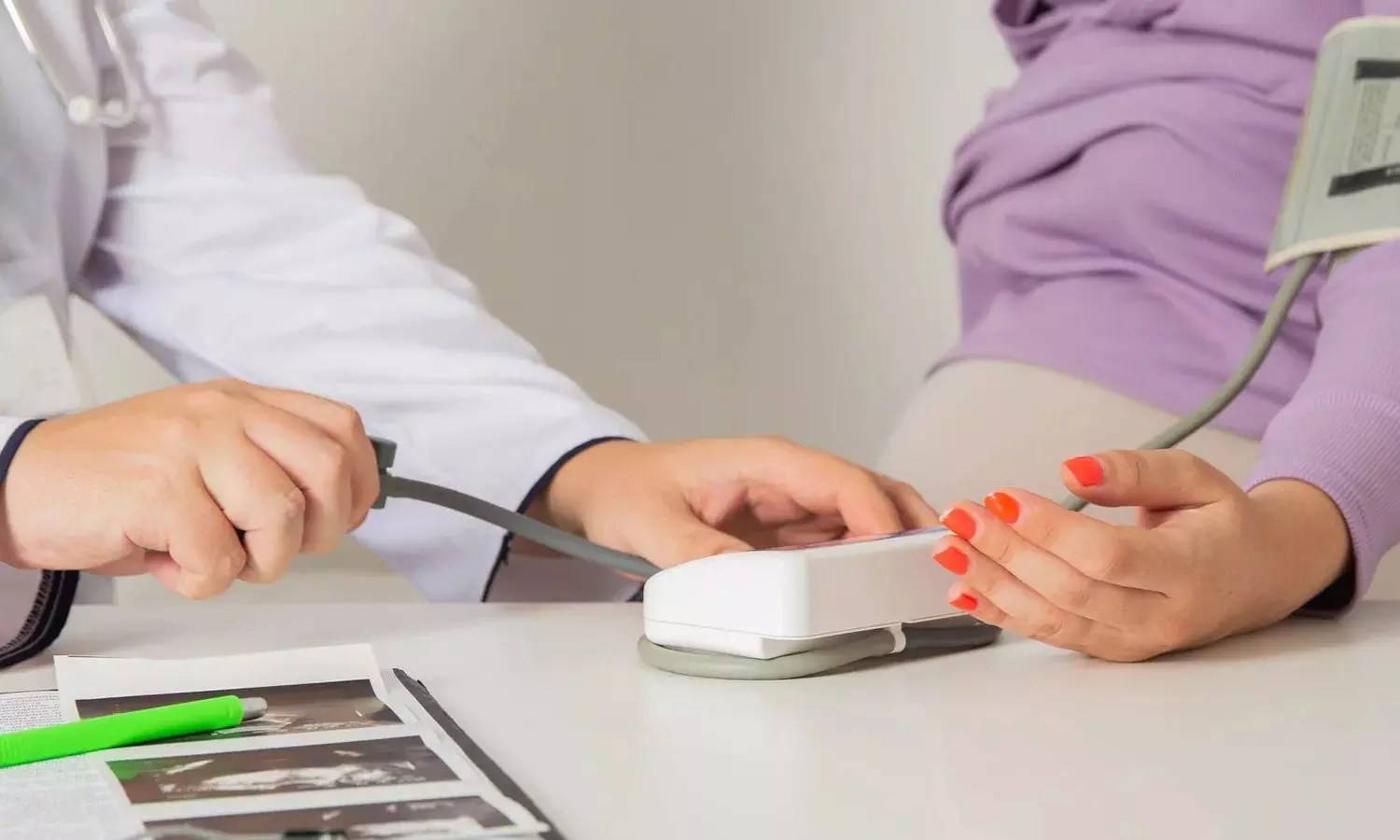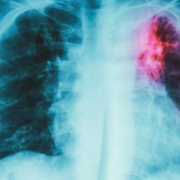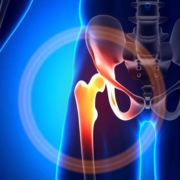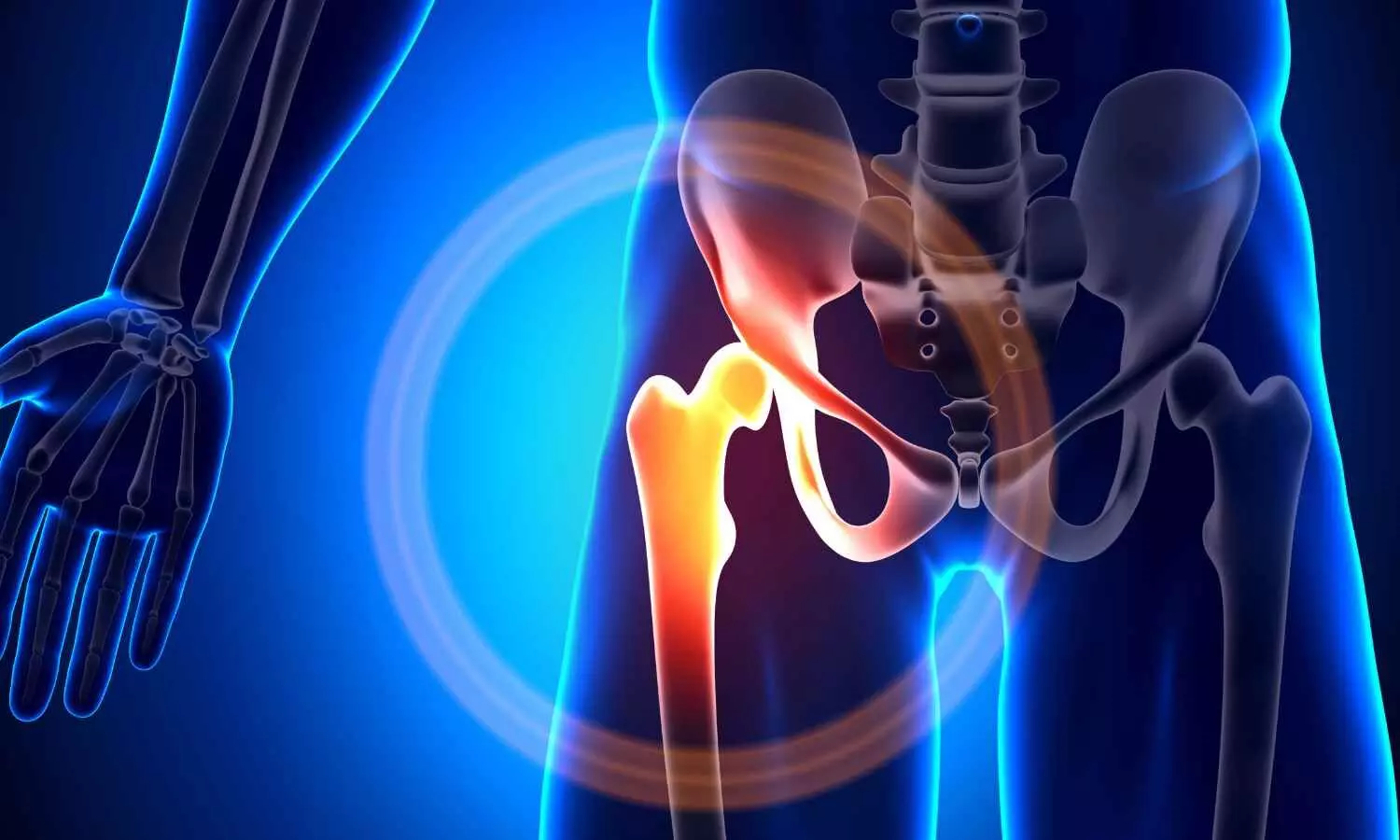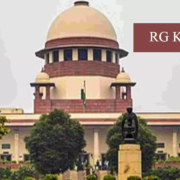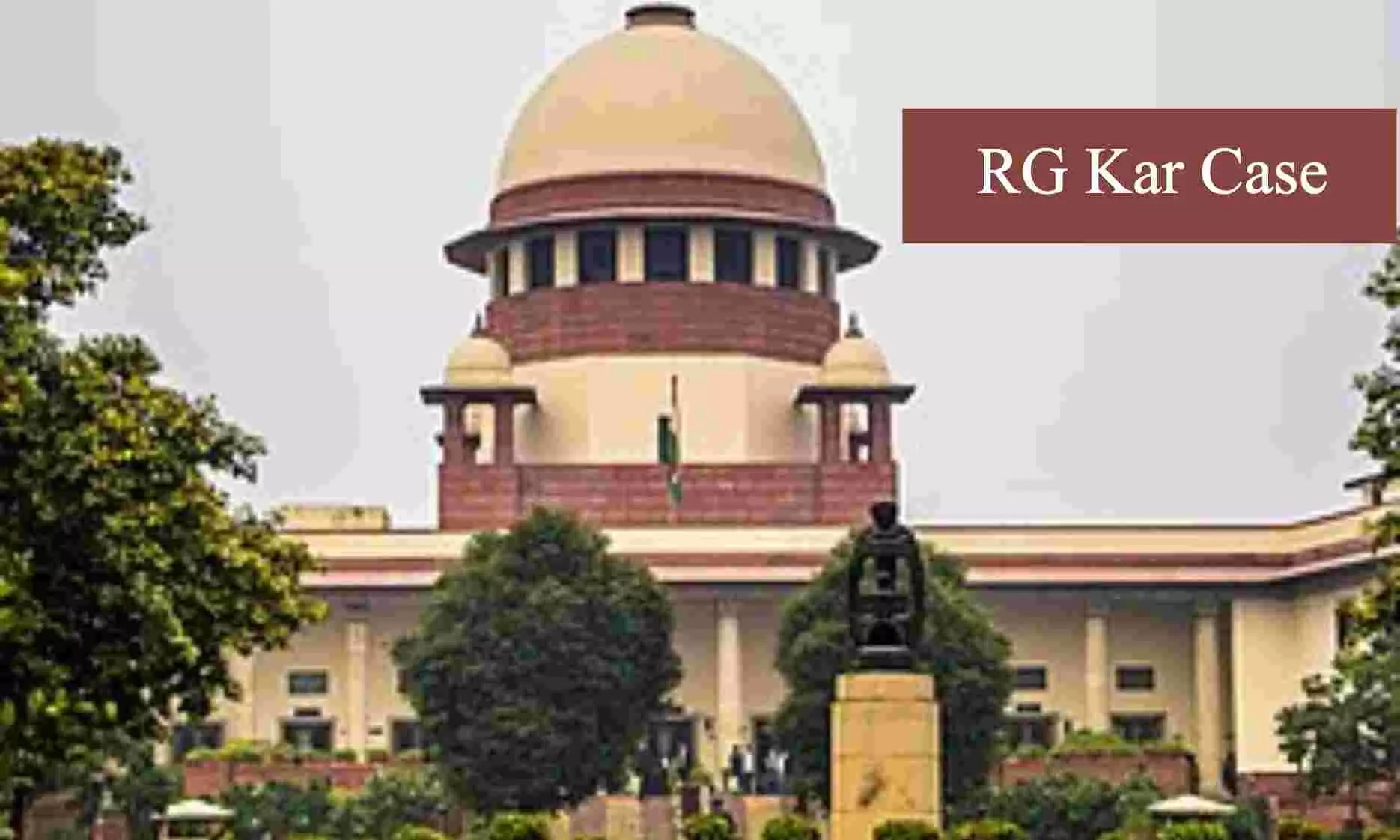
New Delhi: The Supreme Court, while considering the suo-motu matter regarding the rape and murder of a PG trainee doctor at Kolkata-based RG Kar Medical College and Hospital, criticised the West Bengal Government today over its “tardiness” in installing CCTVs, and building toilets to ensure the safety of resident doctors at their workplace.
Taking note of the submission of the West Bengal Government’s counsel that the works would be completed by 31st October, the Apex Court bench comprising the Chief Justice of India DY Chandrachud, Justices JB Pardiwala and Manoj Misra observed, “…the status report submitted by WB indicates the ongoing work ….thought the state has indicated that remaining work will be completed by 31st October, but state has assured that it will make all endeavours to complete the work by 15th October 2024.”
Listing the matter for further hearing on October 14, 2024, the Apex Court bench directed the counsel for the Union Government Tushar Mehta to submit the report on the progress of the National Task Force on the next day.
What Happened at the Supreme Court Hearing today?
Photographs & Name of Deceased Still Being Used on Social Media Posts:
During the hearing of the matter, the counsel for the deceased’s parents highlighted that there were still a lot of social media posts disclosing her name and photos.
However, CJI Chandrachud that an order in this regard has already been passed and now it is only upon law enforcement to enforce the order. Responding to this, the counsel asked if there could be a nodal officer and email ID provided by the Union for the taking down of the posts according to the law.
Meanwhile, Advocate Nandy for the senior doctors pointed out that reels were also being made with hindi songs in it. At this outset, the CJI observed that the West Bengal Government should immediately contact all the media posts.
Advocate Vrinda Grover, appearing for the victim’s family, pointed out that there is also a YouTube movie that is slated for release tomorrow which says that it is based on the victim. However, the CJI pointed out that to stop the film, legal recourse needed to be taken. Again, Advocate Grover urged the Court to appoint a nodal counsel to whom the victim’s family could pass the information.
After the counsels highlighted that the last order of the Apex Court was regarding Wikipedia only, the CJI noted that “The parents of the deceased are disconcerted by repeated clips in social media referring to photographs and the name of the deceased. Besides these, videos have also proliferated. Earlier order is clarified to apply in relation to all intermediaries and to reiterate no intermediate shall be allowed to carry the name or pics of her identity.” Further, the CJI asked MEITI to notify a nodal officer in relation to any uploading or unauthorized publication which be taken away.
Meanwhile, Senior Advocate Mahesh Jethmalani pointed out that till death no FIR has been lodged against the Police Commissioner who revealed the name of the victim and the High Court had said that the Supreme Court would look into this.
After perusing the status report submitted by the Central Bureau of Investigation (CBI), the CJI observed that very substantial leads have come up in the CBI investigation. Asking CBI to continue with the investigation, the CJI noted that the CBI has given statements on both aspects- the rape and murder case and the financial irregularities.
Referring to the report, which mentioned that the injury was accelerated because of braces and glasses she was wearing, the CJI asked “how can that happen if you are lying for sleep?”
On this, one of the counsels asked if the person who conducted the Forensic Examination was examined. To this, Solicitor General Mehta informed that he was examined before hospitalisation.
Counsels Highlight Possibility of Accused Persons Still Being in Power:
During the proceedings, Advocate Jaisingh, appearing for the junior doctors in Bengal, informed the Court that the Junior Doctors have already gone back to work. She also submitted that she had 4 names, who arrived at the place of crime and some were elected members of the Council.
Advocate Nandy also submitted that a lot of people mentioned in the CBI wrt in the financial irregularities case and who were also present at the crime scene, are still in power. She urged the Court that they should be suspended temporarily until the investigation is over. Advocate Jaisingh pointed out that 7 people in investigation are still in employment at RG Kar and argued that they only needed to be suspended temporarily so that the doctors can go back to work with confidence. She urged the Court to issue directions to let the alleged persons go on leave.
Also Read: RG Kar Case: Supreme Court tells protesting doctors to resume work from tomorrow, state to ensure Safety
The CJI asked the Solicitor General to inform the Court why the people under investigation are still employed in RG Kar against whom financial irregularities are alleged.
“…ultimately any action has to be taken by the state govt…it would be appropriate at this stage for sharing of information with the State Govt,” observed the CJI, further seeking information about the 5 doctors in RG Kar who were suspended.
“presently we are seeing is Rape and financial irregularities ….we are focusing on RG KAR but rest assured we can see other things, we can look at the IA, if there is need for broadening the investigation…this is part of the broader nexus (alleged mafia mentioned by the adv),” the CJI was quoted noting by Live Law.
Meanwhile, Advocate Dwivedi appearing for the State of West Bengal informed that when the doctors met the CM, they requested the transfers of police officials, they were transferred. However, Advocate Nandy pointed out that they had asked for resignation.
In response to this, Advocate Dwivedi pointed out that furthermore any information is given by the CBI on any person, action will be taken without any difficulty.
Taking note of these submissions, the CJI pointed out that CBI has submitted the 4th status report dated 30 September indicating the leads and steps taken in the investigation. Referring to this, the CJI observed, “…at this stage , when investigation is in progress, it would not be appropriate to set down the details of leads ….CBI is conducting investigation on (1) the rape and murder and (2) allegation on financial irregularities – whether there is relationship between the two is a matter of investigation by the CBI.”
“…several persons against whom serious allegations of misdemeanor are there are occupying positions in the college…the submissions of the doctor is that such persons should either be suspended or directed to be on leave is matter to be decided by the state govt ….” the Court further observed.
The CJI referred to the West Bengal Government’s submission stating that if the CBI shares any information of such person, the State will take action consistent with the law. Referring to this, the bench ordered, “…counsels submit that the financial irregularities would extent to outside the state, the CBI may be informed along with the modalities prescribed, the court may be informed what other directions maybe required to be given.”
Court Seeks Details of Work Done to Ensure Safety of Doctors:
After issuing directions that the details of the IA may be shared with the CBI, the CJI questioned the West Bengal Government regarding the steps taken for CCTV cameras and the construction of toilets and separate resting rooms etc.
In response to this, Advocate Dwivedi requested for more time to complete the constructions as there are logistical delays, flood situation etc. He submitted that 36% CCTVs have been installed and the remaining likely to be completed by 10 October.
At this outset, the CJI noted that no part of the work is above 50%. “why is the process so tardy? we have been monitoring since 9 August…” questioned the CJI. However, Advocate Dwivedi assured to complete the work by 31st October, by 15th most work will be done.
Meanwhile, the Apex Court bench recorded that 2 officers were brought in as Principal and VP of the College- Dr. Manas Banerjee and Dr. Saptarshee Chatterjee.
“…the status report submitted by WB indicates the ongoing work ….thought the state has indicated that remaining work will be completed by 31st October, but state has assured that it will make all endeavours to complete the work by 15th October 2024,” observed the CJI.
One of the advocates brought allegations against the current principal at RG Hospital. However, the CJI asked him not to just throw allegations without any basis.
Allegations Against Junior Doctors Not Performing OPD Works:
During the hearing, the counsel for West Bengal Government pointed out that doctors were not performing OPD services. However, CJI recorded the submission of Advocate Jaisingh stating that the doctors were performing all duties and services.
Advocate Jaisingh submitted that they were performing all essential services including IPD and OPD services and insisted the Court to record categorically that they were providing all essential and emergency services.
The CJI noted, “Jaisingh has categorically stated that all doctors shall perform essential services including IPD and OPD.”
Meanwhile, Advocate Nandy pointed out that there have been several other attacks including the recent incident at Sagar Dutta Medical College. At this outset, even though Advocate Dwivedi alleged that a patient had died because no beds were provided and no doctor attended, Advocate Nandy vehemently argued that such allegations could not be made.
Court Asks Solicitor General to Submit National Task Force’s Report on Next Date:
When Advocate Jethmalai reiterated the case of the Police Commissioner revealing the victim’s name. the CJI observed, “we are not staying the proceedings before HC …HC seasoned enough to know which areas to enter upon. SG can I we have report of the NTF on next date? SG shall place on record of the progress of the NTF on the next date.”
Even though Advocate Jaisingh urged the Court to include one member from the State of West Bengal in the National Task Force, the Court clarified that the Task Force was not State specific and its report would have pan-India implications.
“the cabinet secretary are coordinating, they will take into account what the WB has to say …..please write an email, request an urgent appointment and give them inputs, it will be a welcomed suggestion, the SG can communicate,” observed the Court.
While Advocate Jaisingh pressed for making a sub-taskforce for West Bengal, the CJI noted, “all that you have to do is address an email, they will ensure that representation of the residential doctors will be heard.”
Also Read: Conditions of Women Doctors not Working at Night Will Prejudice their Careers: Supreme Court Criticises Bengal Govt’s Policy



